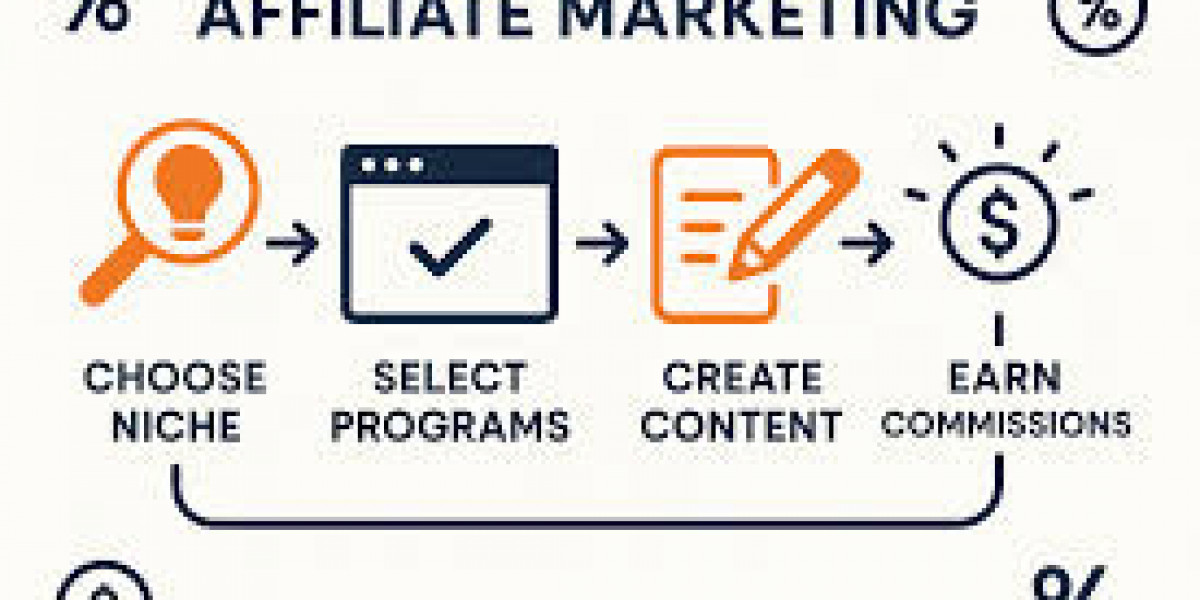In affiliate marketing, content is king. Without compelling content, even the most lucrative affiliate programs struggle to generate clicks or conversions. A well-planned content strategy not only drives traffic but also builds trust, nurtures your audience, and encourages purchases. By combining the right content types with effective promotion strategies, affiliate marketers can maximize revenue and create long-term online business growth.
This article will outline the key components of a successful affiliate marketing content strategy and how marketers can implement them to boost affiliate earnings.
1. Understand Your Audience and Their Intent
The foundation of any content strategy is a clear understanding of your audience. In affiliate marketing, knowing your audience means understanding:
Demographics: Age, location, income, and lifestyle
Needs and pain points: What problems are they trying to solve?
Search intent: Are they researching, comparing, or ready to buy?
Once you know your audience, you can create content that resonates with them and drives action. For example, someone researching “best wireless earbuds under $100” is likely ready to purchase, making product reviews or comparison guides highly effective.
2. Plan Your Content Around Buyer Journey Stages
Affiliate marketing content should guide your audience through the buyer journey, which includes three stages:
Awareness: Users are discovering a problem or need. Content here educates and informs. Examples: Blog posts, how-to guides, infographics.
Consideration: Users are comparing solutions. Content here builds trust. Examples: Comparison articles, product reviews, case studies.
Decision: Users are ready to make a purchase. Content here drives conversions. Examples: Discount pages, product roundups, email sequences.
A strong content strategy ensures you have materials for every stage, keeping potential buyers engaged until they convert.
3. Focus on High-Quality, SEO-Optimized Content
Affiliate content must be valuable, well-written, and optimized for search engines to attract traffic. High-quality content improves trust, engagement, and conversion rates. Key SEO considerations include:
Keyword research: Target buyer-intent keywords with good search volume and low to medium competition.
On-page SEO: Use descriptive titles, headers, meta descriptions, and image ALT tags.
Content depth: Comprehensive, detailed content ranks better and keeps readers on your page longer.
Internal and external linking: Link to other relevant content on your site and authoritative external sources to improve credibility.
A content strategy without SEO is like building a store in the middle of a desert—visibility is low, even if your product is excellent.
4. Diversify Content Types
Relying on a single type of content limits your reach and engagement. Top affiliate marketers use a variety of formats to target different audience preferences:
Blog posts and articles: Informative and evergreen content that draws organic traffic.
Product reviews and comparisons: Directly influence purchasing decisions.
Videos: Engage visual learners and boost conversion rates. Video reviews and tutorials work exceptionally well.
Email newsletters: Nurture your audience, share promotions, and recommend products.
Social media content: Reach new audiences and promote affiliate links through posts, stories, and reels.
Infographics and guides: Simplify complex topics and increase shareability.
Diversifying content allows you to reach users on multiple platforms and increase the chances of conversions.
5. Incorporate Storytelling and Authenticity
Modern audiences value authenticity. People want honest opinions, experiences, and personal recommendations. By telling stories about how a product solved your problem or improved your life, you make your content relatable and trustworthy.
Affiliate marketing thrives on trust. Content that is overly salesy or promotional can reduce credibility, while storytelling creates a connection that encourages readers to act on your recommendations.
6. Use Data-Driven Insights to Improve Content
A successful content strategy is never static. Tracking performance metrics allows you to understand what works and what doesn’t:
Traffic metrics: Which pages are attracting the most visitors?
Engagement metrics: Time on page, bounce rate, and social shares.
Conversion metrics: Clicks on affiliate links, lead generation, and sales.
SEO performance: Keyword rankings and organic traffic growth.
By analyzing these metrics, you can refine your content, focus on high-performing topics, and optimize underperforming pages to maximize affiliate revenue.
7. Build a Content Calendar for Consistency
Consistency is key in content marketing for affiliate sales marketing. A content calendar helps you:
Plan posts around holidays, product launches, or seasonal trends.
Maintain a consistent publishing schedule to keep your audience engaged.
Ensure diverse content types and topics are covered.
Track deadlines and promotional campaigns for affiliate programs.
A well-structured calendar prevents rushed content creation and ensures every piece of content contributes to your overall strategy.
8. Optimize for Conversion
Driving traffic is important, but converting that traffic into affiliate sales is the ultimate goal. Techniques to optimize conversions include:
Clear calls-to-action (CTAs): Use compelling and visible CTAs to guide users to click your affiliate links.
Comparison tables: Help users quickly see product differences and make informed choices.
Product demos and tutorials: Demonstrate real-life benefits of the product.
Trust indicators: Reviews, ratings, testimonials, and case studies increase confidence.
Scarcity and urgency: Limited-time offers and promotions encourage faster decisions.
Conversion optimization ensures that your content not only attracts visitors but also drives measurable affiliate revenue.
9. Promote Content Across Channels
Creating content is only half the battle. Promotion ensures your affiliate content reaches the right audience:
Social media platforms: Share blog posts, videos, or guides to reach wider audiences.
Email marketing: Use newsletters to nurture leads and promote affiliate offers.
Forums and online communities: Engage with niche-specific communities by providing value and subtly linking your content.
Paid advertising: Boost high-converting content to target audiences through PPC campaigns or social ads.
A multi-channel approach amplifies content reach and improves overall affiliate performance.
10. Continuous Improvement and Testing
Content strategy is iterative. Continuously A/B test headlines, CTAs, formats, and placements. Repurpose high-performing content into other formats like videos, infographics, or email sequences to extend reach and revenue potential.
Affiliate marketing evolves, and so should your content strategy. Staying updated with industry trends, SEO changes, and audience behavior ensures long-term success.
Conclusion
An effective affiliate marketing content strategy blends audience understanding, SEO optimization, diverse content types, storytelling, and conversion-focused techniques. By planning content around the buyer journey, promoting it strategically, and continually improving based on data insights, marketers can generate consistent affiliate revenue.
Affiliate content is not just about promoting products—it’s about creating value, building trust, and guiding audiences toward solutions. When executed well, a content strategy becomes the backbone of a profitable affiliate marketing business.







